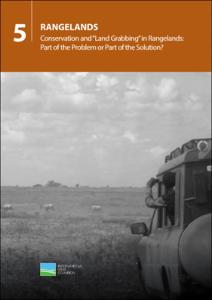Resource information
Large-scale land acquisitions have increased in scale and pace due to changes in commodity markets, agricultural investment strategies, land prices, and a range of other policy and market forces. The areas most affected are the global “commons” – lands that local people traditionally use collectively — including much of the world’s forests, wetlands, and rangelands. In some cases land acquisition occurs with environmental objectives in sight – including the setting aside of land as protected areas for biodiversity conservation. On the other hand, current trends and patterns of commercial land acquisition present a major and growing threat not just to local livelihoods and human rights, but also to conservation objectives. There is a potential opportunity here for greater collaboration between conservation interests, and local communities’ land rights interests with their supporters amongst human rights and social justice movements. This Issue Paper documents experiences from the rangelands of Mongolia, Kenya, India, Ethiopia, and other countries, which were presented at a Conference on Conservation and Land Grabbing held in London in 2013.



